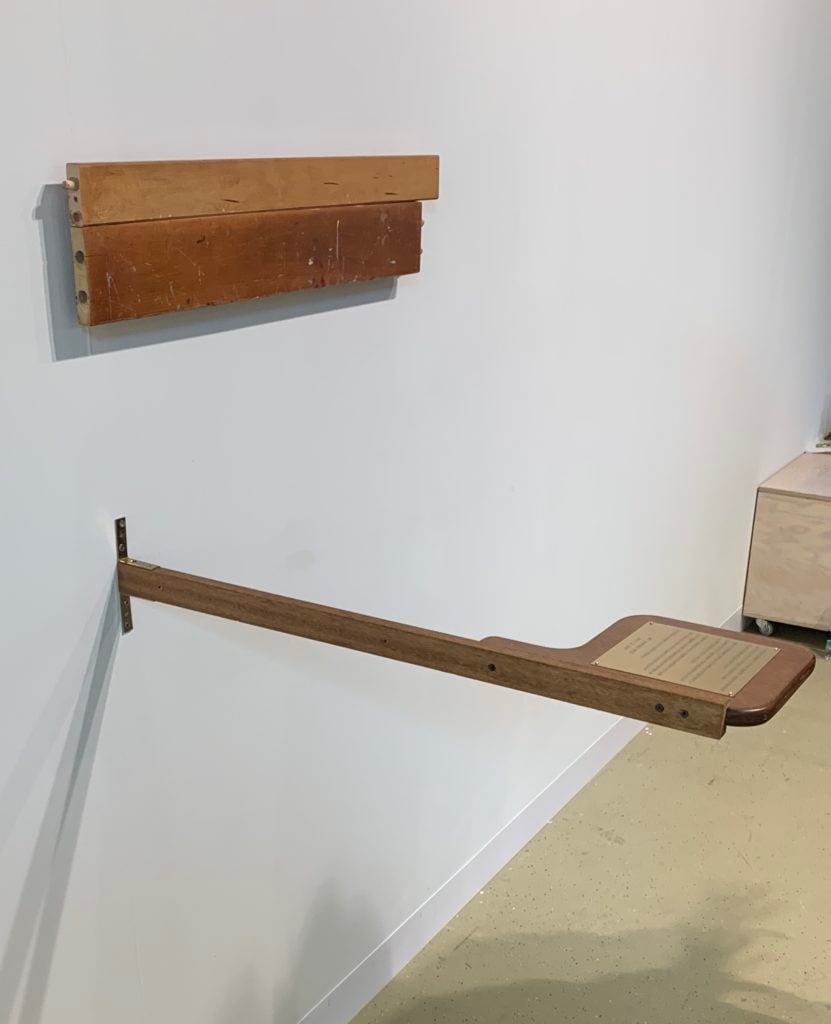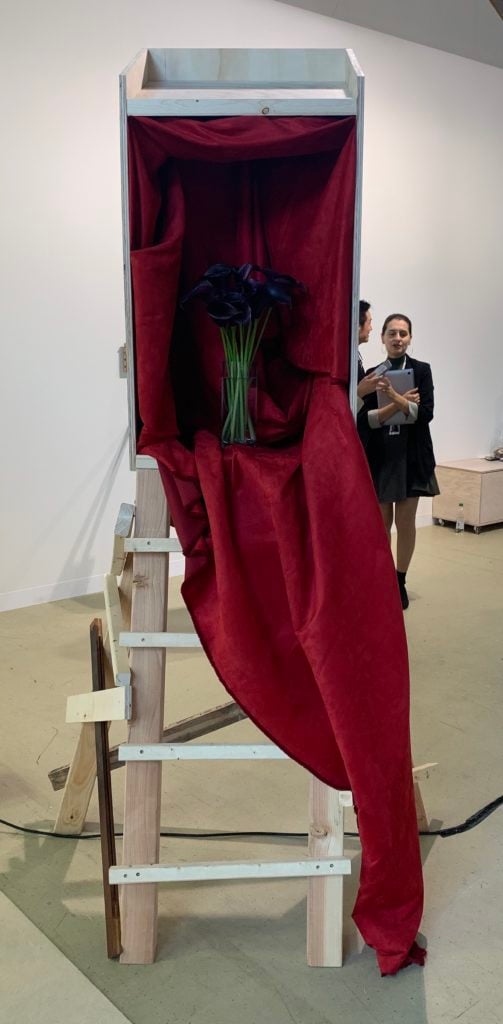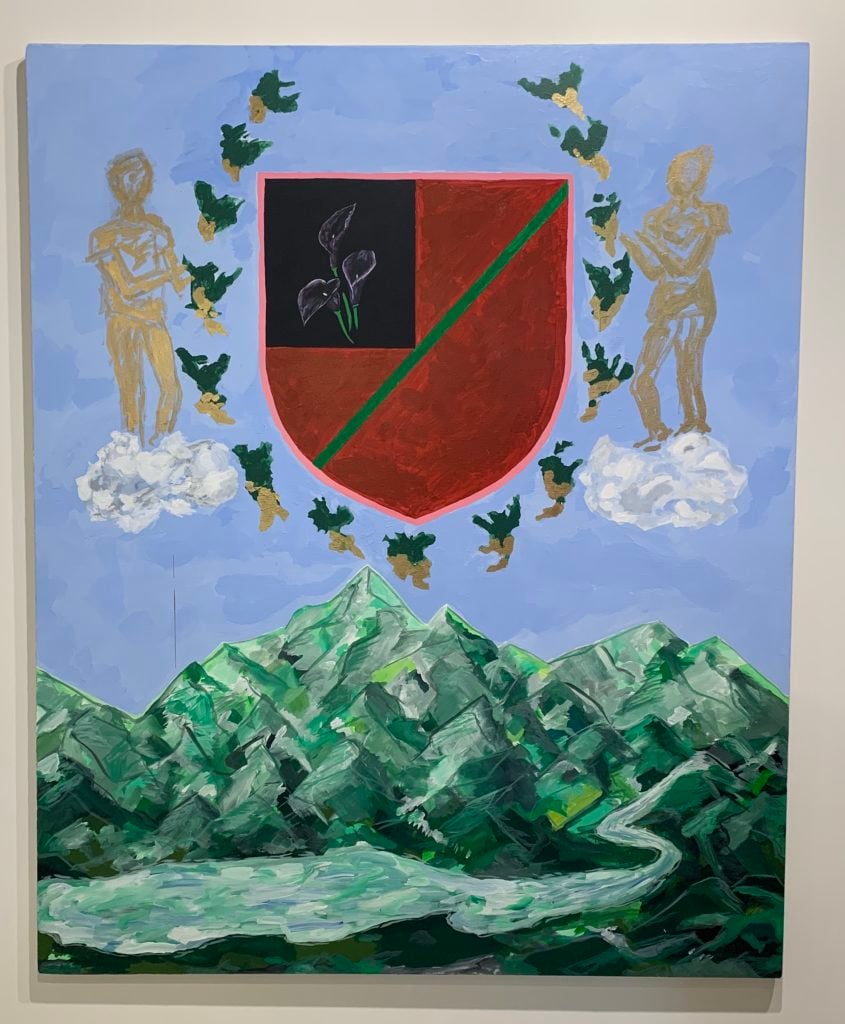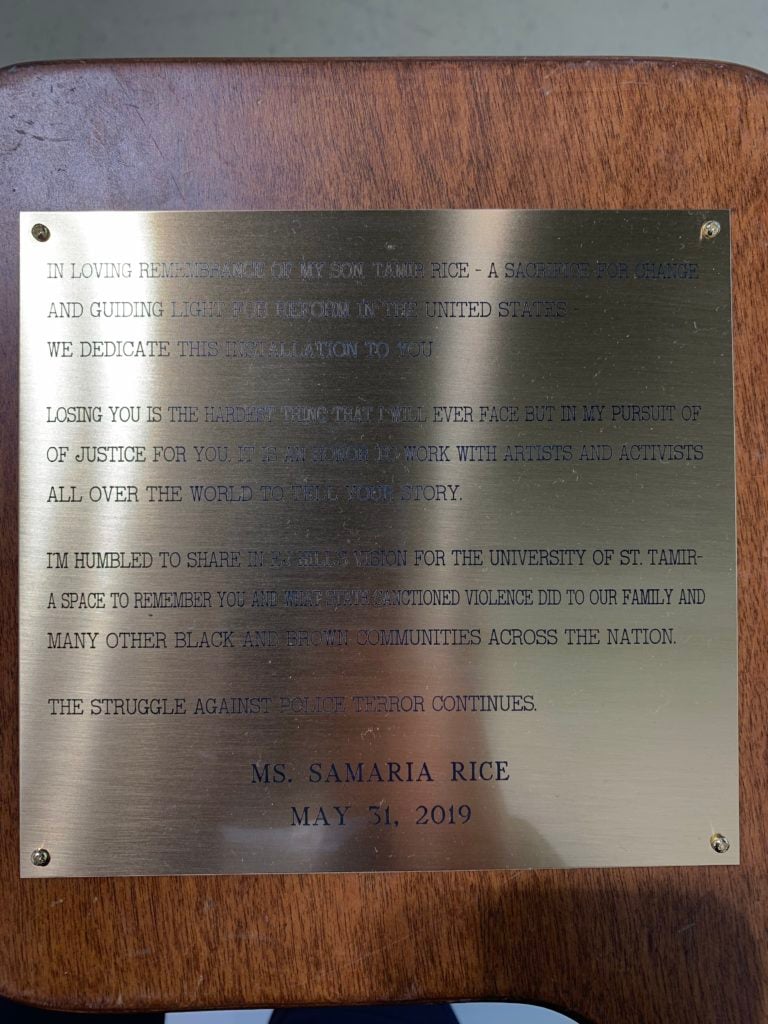Art Fairs
7 of the Best Works at Art Basel, From an $18.5 Million Portrait of Giacometti’s Mistress to a White-Hot Painting by a New Market Star
Here are some of the standout pieces in this year's fair.
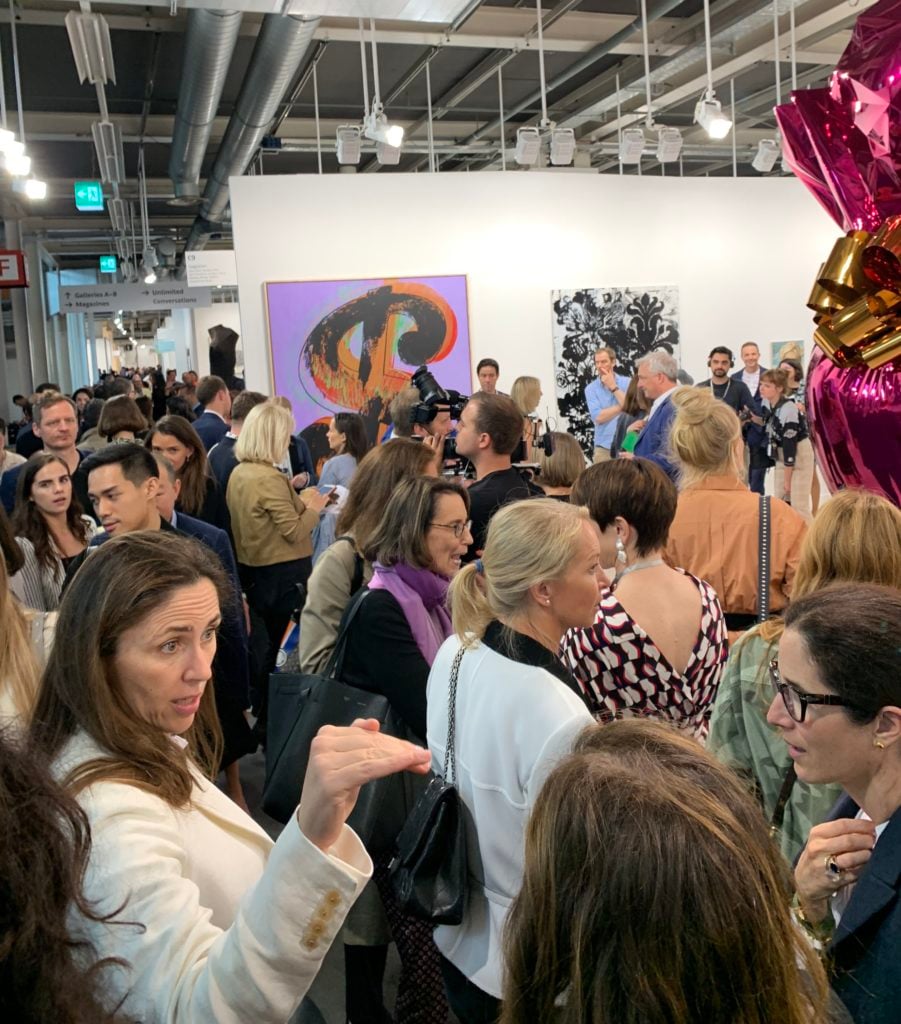
Here are some of the standout pieces in this year's fair.

Andrew Goldstein

It’s spargelzeit in Switzerland, and that means that precious white asparagus is on the menu and that even more precious artworks are decking the halls of Basel’s Messeplatz, where this year’s edition of the world’s premiere blue-chip art fair is back for its 49th year. Here are some of the most exciting works on view at Art Basel.
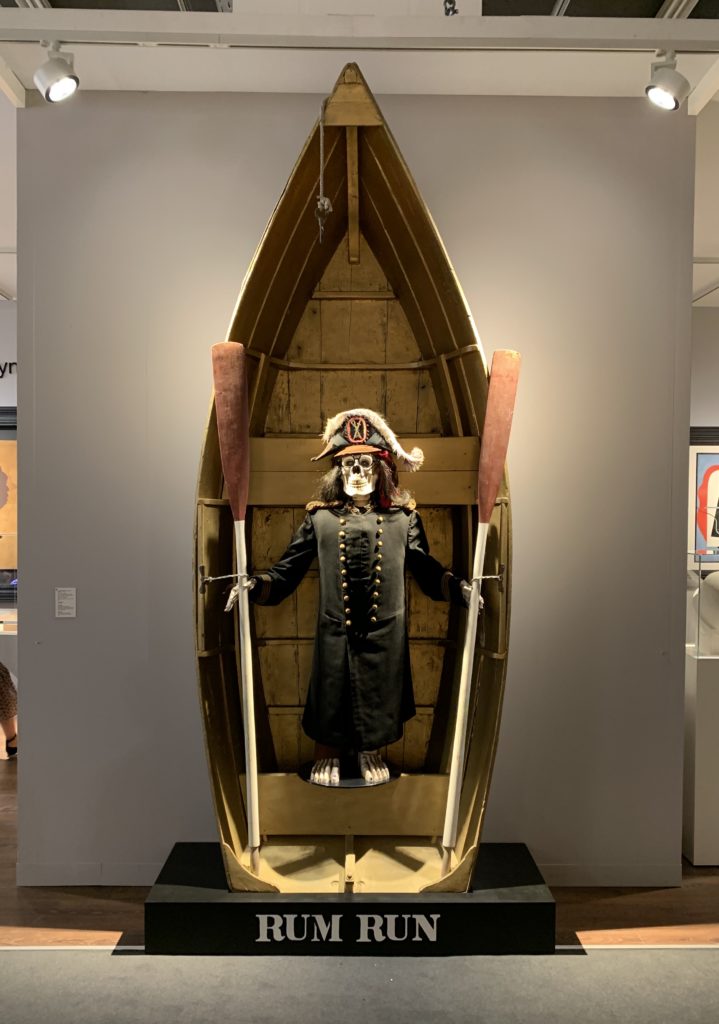
Since his death last year at age 89, the Robert Indiana myth has at long last expanded in the public imagination beyond his proto-viral LOVE sculpture to encompass the messy but certainly more interesting aspects of his work and life. For one thing, the sordid battles over his estate—waged by a seemingly piratical crew of people who ingratiated themselves with the aging artist and, among other things, began churning out cynically commercial versions of his signature work—have proven captivating. His ramshackle home in Vinalhaven, Maine, where he moved in 1978 and lived for the rest of his life, filling the former Odd Fellows meetinghouse with his art and eccentric finds (including lots of oversized stuffed animals), has also gained celebrity, and potentially will become a museum.
This arresting sculpture, shown at Galerie Gmurzynska’s booth at the fair, was one of the many artworks that gathered dust over years at Indiana’s island compound. Begun in 1975 but only finished around 2005, it contains the hallmarks of the artist’s controlled early sculptures made when he was living in New York’s artist hub Coenties Slip: the wooden base, for instance, is stenciled with the words “Rum Run,” stirrings of the textual play that would lead to Love. But it gets appealingly weirder from there. The skeletal captain wears an old uniform from the Odd Fellows fraternity, paired with glasses that Indiana claims were the architect Philip Johnson’s; one toe has purple nail polish. The skiff itself, the only boat the artist ever owned (despite moving to the seaside, he never took to sailing), is painted gold—another link to his early work, which often contained the grand color. The title, meanwhile, is taken from an artwork that Indiana made as a child and kept.
The unexpected strangeness of the sculpture, so far removed from the sanitized work that both made the artist famous and confined his reputation during his life, is its chief appeal. Sold at the fair, it is now headed to a museum in Asia, where it will be displayed alongside a meditative work by Nam June Paik.

One of the most affecting masterworks of the fair can be found in the darkened enclave of Landau Fine Art’s stand, where this painting shows the softer side of the tormented, often unsparing Giacometti. One of only a dozen or so portraits that he made of his mistress and muse Caroline—a demimondaine whose full name is unknown—the canvas goes tender where the artist often goes tough. The face, not furiously scratched out in black but painted in glowing white, is serene, with the bridal hint of a veil framing it. The body, not gaunt or ragged, can even be considered curvaceous (at least by Giacometti’s standards). The hands, crossed over her knees, indicate a relaxed pose. The whole picture is loving, romantic.
Secured for the fair from a private New York collection, which had originally acquired it from Giacometti’s longtime Swiss dealer Ernst Beyeler, the painting offers precisely the kind of lasting impression you hope for from a top-notch fair like Art Basel.
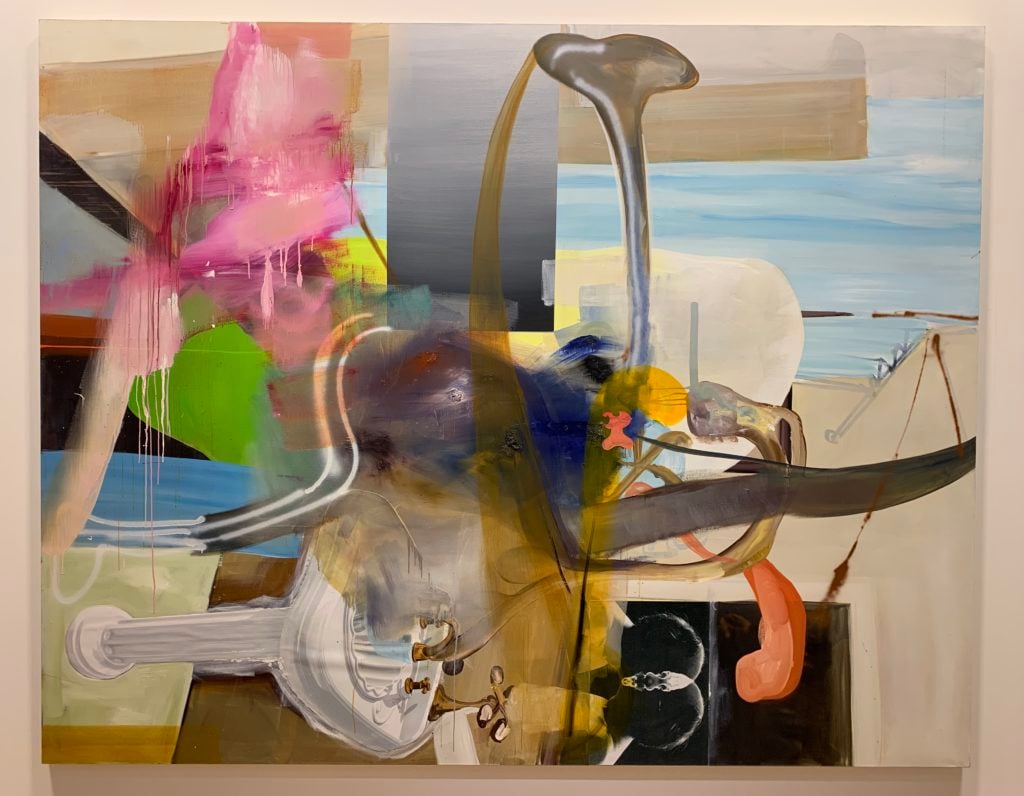
A stunner by the great German painter Albert Oehlen, this tangle of shapes and gooey colors blows into Skarstedt’s booth like a maelstrom, overabundant with visual power and painterly dynamism. As an artist, Oehlen is ferociously inventive, switching between approaches and modalities so varied that they can seem to be the output of a whole gallery’s worth of painters. But here, he also pauses to reflect on where he came from. Collaged into the bottom of the canvas, an elderly figure stands in his underwear by a bathroom sink, a reference to his old Berlin friend and schoolmate Martin Kippenberger’s famous self-portraits that seems to imagine a world where that turbulent painter had not died young in 1997, but outlived his “bad boy” days to become an old man. Imagine if both of these protean artists were still attacking the canvas today—painting would be another thing altogether.

After Annie Leibovitz’s boffo survey at Hauser & Wirth’s Los Angeles museo-gallery earlier this year, there should be little surprise at the news this week that the photographer has signed up with the juggernaut for worldwide representation. After all, the gallery has certainly figured out how to position her photography, long a staple of magazines like Rolling Stone and Vanity Fair, as fine art. In the LA show, the dealers worked with Leibovitz to mine her voluminous archive and cover the walls with pinned-up photos in such profusion that her world—of movie stars, musicians, politicians, authors, and other assorted legends—enveloped the viewer in a swirl of memories that almost seemed to be their own.
One of the smartest moves of that show, however, was to isolate different themes or storylines from within her body of work and isolate them as conceptual clusters. One of the more memorable was the group of photos that Leibovitz, a nonstop snapper, took of her famous friends as they drove her around LA in the 1970s and early ‘80s. The range of subjects here is exhilarating—you see everyone from Norman Mailer to Fran Lebowitz to Richard Pryor to Jerry Garcia behind the wheel—and, presented together, they take on the shape of a conceptual catalogue in the vein of Bernd and Hilla Becher’s typologies of the German industrial landscape, even if they were never created with such a framework in mind. What you get, at the end of the day, is a great object to sell. This one comes in an edition of four, and Leibovitz has said that she and the gallery are now “looking at editioning works from across my career.”
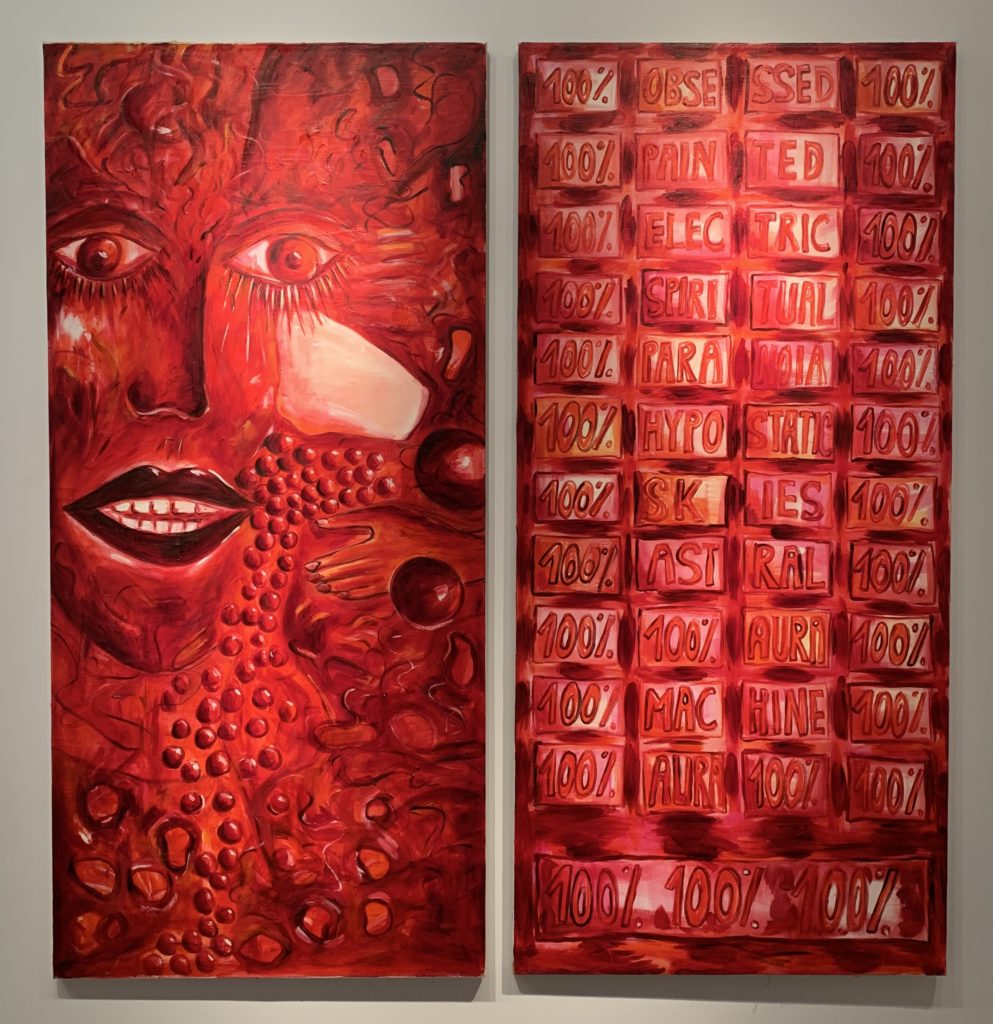
The painter and musician Jutta Koether has been a mainstay of New York’s cool downtown art scene for decades, turning out brushy, attitudinal works in glowing tones of amber, red, and orange. So when the powerhouse uptown gallery Lévy Gorvy—known for selling the bluest-chip works for tens of millions of dollars—poached her from her longtime dealer Bortolami earlier this year, there was a kerfuffle, and some confusion. Her market, for instance, is on a very different level than the other artists Lévy Gorvy works with (her auction record is $37,000, set in 2015), and she doesn’t have a clear commonality with Dan Colen, the other younger artist on the roster. So why Koether?
“What we responded to in her work was her practice, how it’s also about performance and installation, and how she goes back and reuses her work in a personal dialogue,” explained Brett Gorvy, speaking for himself and his business partner, Dominique Lévy. “We love artists who are experimental and can remain themselves, true to their own vision despite whatever attention they get. We’re both romantics.” In the booth, her painting was displayed alongside a small Giacometti bust and a Picasso painting—certainly a novel context for Koether. “We can help her attain the respect that she’s long deserved,” Gorvy said. “We’re looking at her from a museum perspective.”
More to the point, it seems as if Gorvy is having fun being a gallerist—a change from his previous career as an auction powerhouse at Christie’s. “Taking artists from another gallery is a new experience and not something that I find very appealing,” he said. “But we have many choices because we are not reliant on the primary market. The ability to have our secondary-market business as a very strong revenue stream allows us to work with artists that we believe in, and I’m interested to see how a change in environment allows an artist to grow and be her best.”
As for Koether’s market, he said, “we’re not dealing with an artist whose prices are off-putting to the marketplace. They’re very accessible to a broader audience, below what the market could support.” But Gorvy doesn’t want to raise prices for the time being. “Markets should be naturally driven,” he said. “If there’s demand, they will grow. We’re not seeing her as some massive product line.”
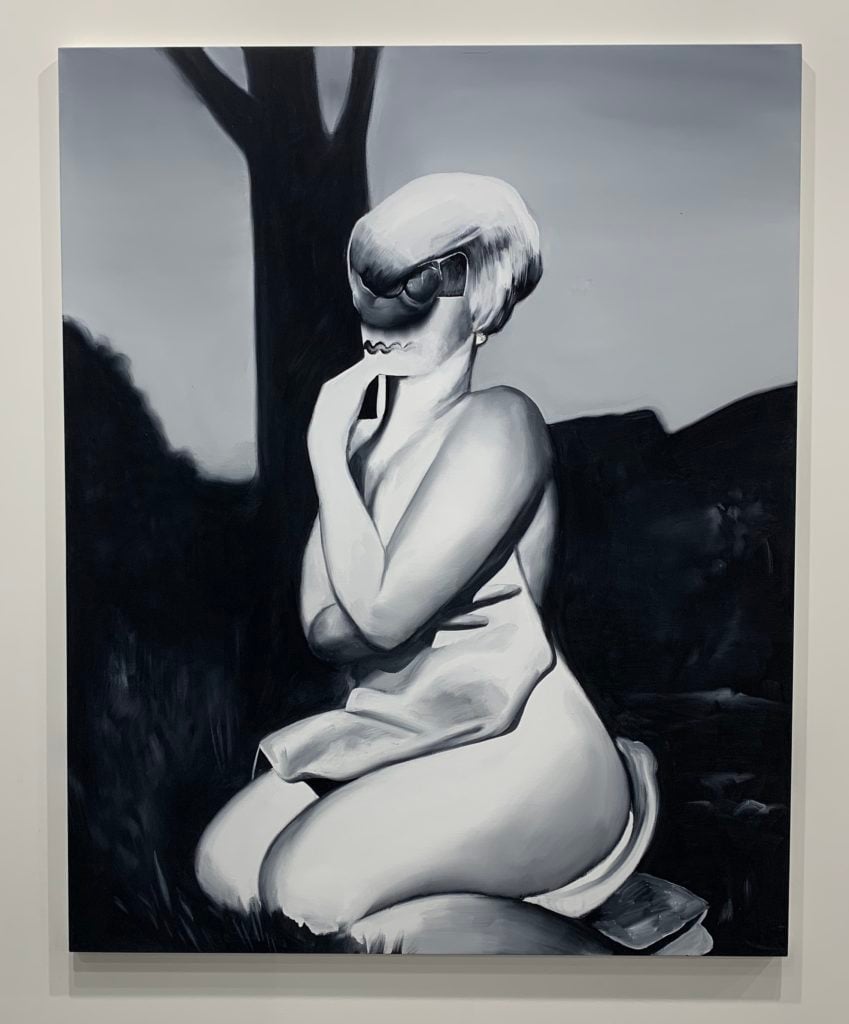
The market for the paintings of Japanese artist Tomoo Gokita has been going wild of late. A former graphic designer who showed with dealer Bill Brady for years, Gokita saw his prices jump from reasonable to extraordinary as soon as he joined up with Blum & Poe, with his auction record continually climbing, most recently to $1 million in last month’s Phillips sale in New York. Demand for his work is being accelerated in part by an active collector base in China—a Hong Kong restauranteur who goes by Superclean Rabbit on Instagram is believed to have been a key buyer—and the gallery says its wait list is “a mile long.” Now, Blum & Poe has found itself in the position of selling paintings for $175,000—like this one of a blurry pinup, which sold before the fair—that could easily jump up to $500,000 if flipped at auction, forcing the gallery to take extra precautions against selling to potential speculators. Since Gokita is fairly prolific, able to turn out paintings in as fast as a day, it will be interesting to see how far the artist’s newfound market momentum can take him.
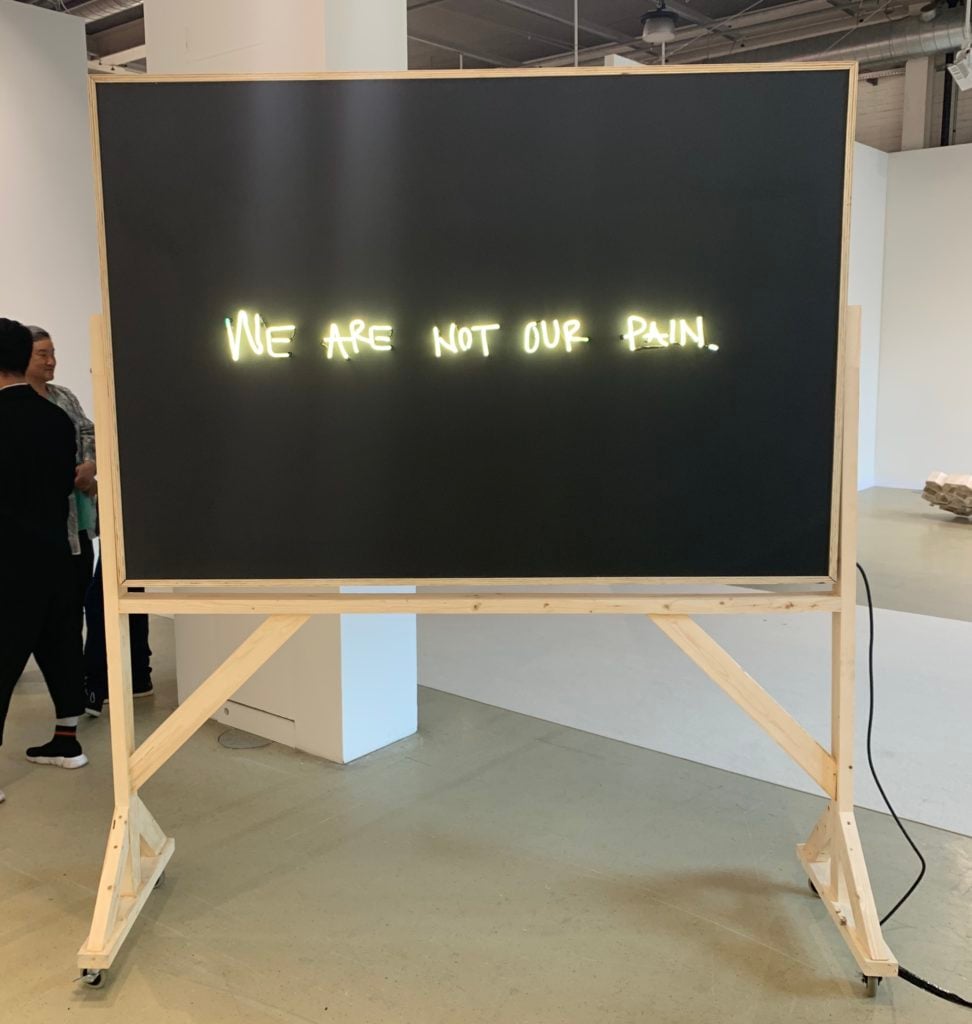
In his work, the artist EJ Hill is driven to examine the failings and opportunities of the American education system, specifically how difficult it is for people in low-income, marginalized communities to get the kind of schooling necessary to rise up in today’s economy. In a performance for the last “Made in LA” biennial at the Hammer Museum, the artist ran laps around each school he attended (one lap for each year there) and afterwards stood atop a winners’ podium for 10 hours a day, six days a week, over the three-month duration of the show. The body of work at the fair deepens Hill’s investigation by also addressing a national tragedy, the police shooting of 12-year-old Tamir Rice in Cleveland.
Framed as “Lesson One” and anchored by a blackboard that reads “We are not our pain,” the installation imagines a fictional “University of St. Tamir,” an ideal alternative institution where, had he lived, Rice might have achieved the kind of education that so many Americans are denied. The concept of “elevation” provided by education is repeated here, both in the snowcapped mountain in the university’s insignia and in a sculpture of a college lectern, which holds 12 black calla lilies, one for each year of Rice’s life. (Hill sees his imaginary campus as being part of a “Lily League,” a twist on the Ivy League.) At the center of the booth, a wooden school desk—sourced from Radcliffe, where the artist just finished a residency—holds a plaque with a message from Rice’s mother, Samaria Rice, that dedicates the installation to his memory and says, “I’m humbled to share in EJ Hill’s vision for the University of St. Tamir.”
It had been important for Hill to secure Samaria Rice’s blessing for his project, and when he reached out to her he was surprised to learn that she is in the process of creating an educational initiative in Tamir Rice’s name as well—one that is specifically aimed to bring art and culture to local youth in their area of Cleveland. She has already bought a building and is currently in the midst of a capital campaign to raise $500,000 for renovations. Hill has now pledged to send a portion of the proceeds from the sales of his “University of St. Tamir” work to the foundation.